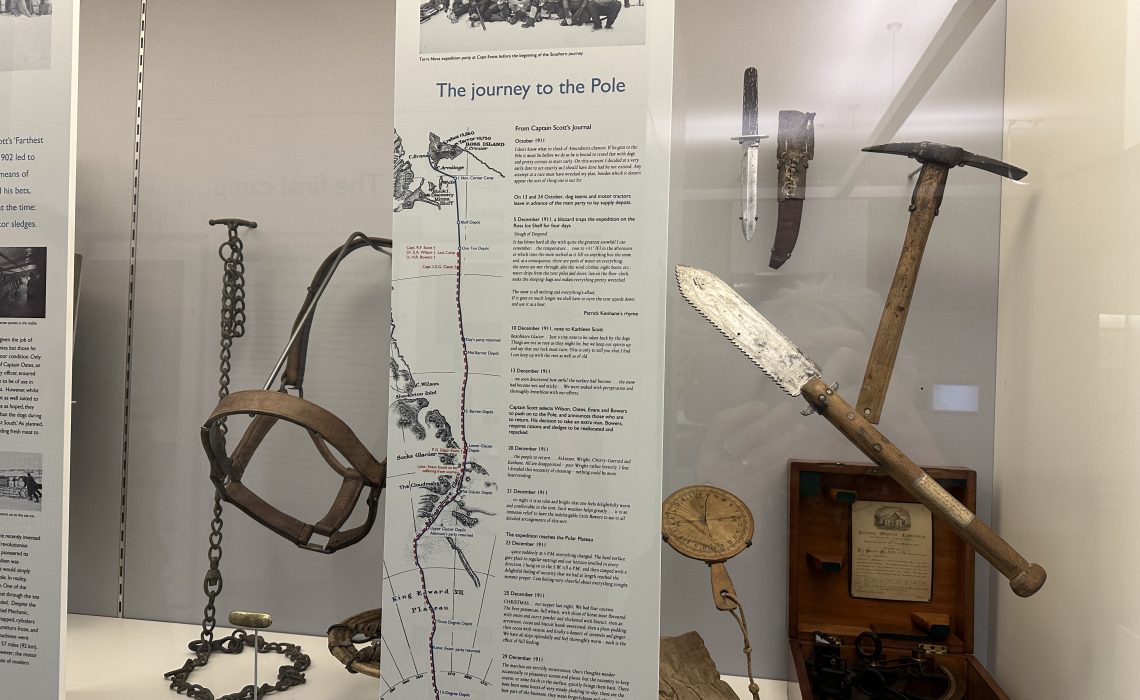
Part 2 of 3: Scott Polar Research Institute – Polar Museum, Cambridge
Planning our short trip away in the UK following some medical ‘stuff’ I had always wanted to visit the Scott Polar Museum at the research centre in Cambridge. My blog last week, our short stay at The Graduate Cambridge, was part 1 of 3 with this visit being the main reason for the Cambridge trip
2024 will bring a trip to the Arctic for me in June – totally different of course in every way to the Antarctica trip but still with some common threads through explorers like Roald Amundsen reaching both the South and North Pole, I thought a history lesson at the museum was a good place to start.
A compact museum, that packs a punch through concise and relevant exhibits. Each display focuses on a detailed information board alongside supporting artefacts delving into both present day living, with respect to the Arctic of course, as well as key ‘bods’ from the past. Mainly our intrepid explorers – Scott, Shackleton…. as expected but also back to the the 1700’s with William Edward Parry and William Spears Bruce. William was clearly a popular name for explorers back then!
What Impressed Me?
Something I find incredible is the amount of actual photographs from these early times and early explorers. I had never envisaged their want to record every step of their journey’s, when taking photographs was clearly a much more arduous process than today’s click on your mobile phone! Obviously it makes sense but the fact that so many were preserved and available to us today is astounding.
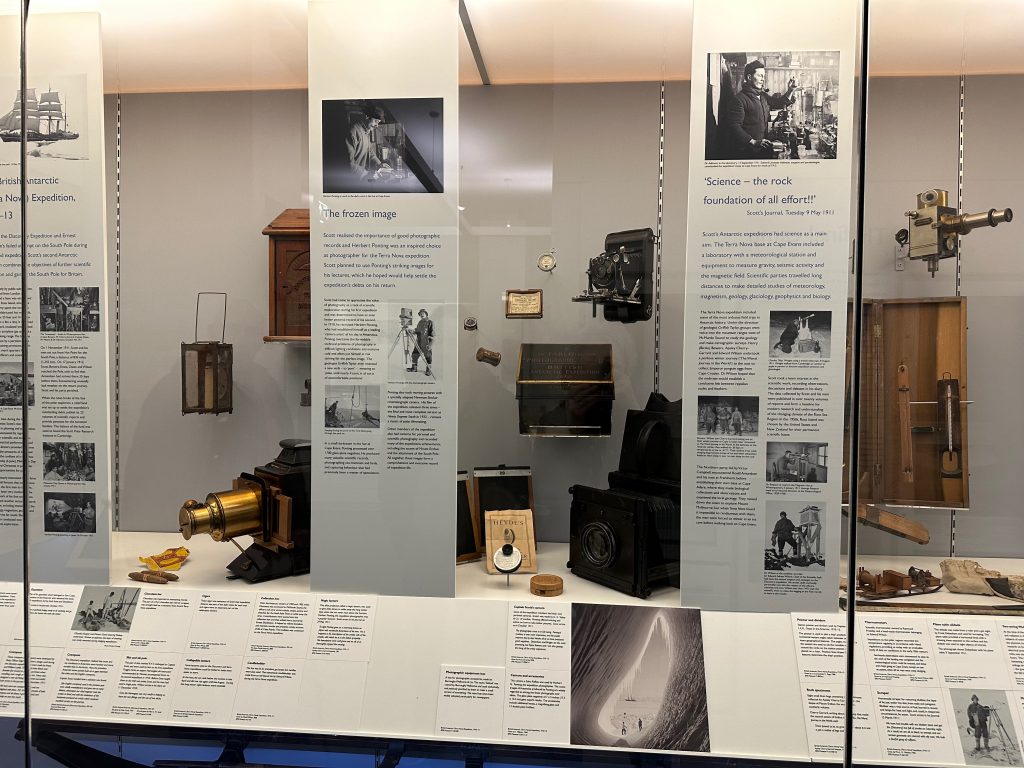
What journeys have some of these artefacts taken to reach here? Scott’s mess dining waist coat, spare buttons and his kitbag. Who kept them? How many years did they remain hidden in attics or old cupboards. Thank goodness someone thought to keep items such as his first snow goggles, modelled on the type Inuit’s used so that we can now understand the learning curves and studies they had to carry out in order to be as best prepared as they could be, in their time, for these epic endeavours to the poles.
Do you enjoy my writing?: Always optional, though Donating even a small amount occasionally, enables me to continue to be another voice for the environment, supporting organisations focussed on conservation and restoration through my blogs, video’s, giving my time on committees, raising awareness. Click on the Donate button, top right hand side of the page for more information on how I am contributing and why your donation counts.
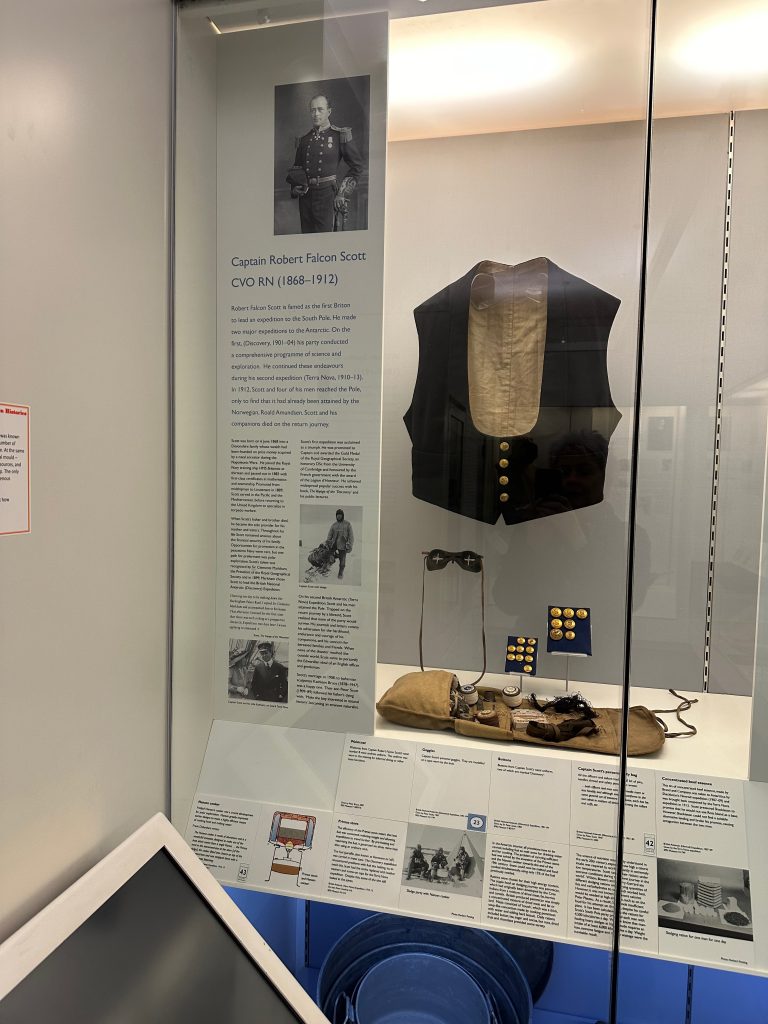
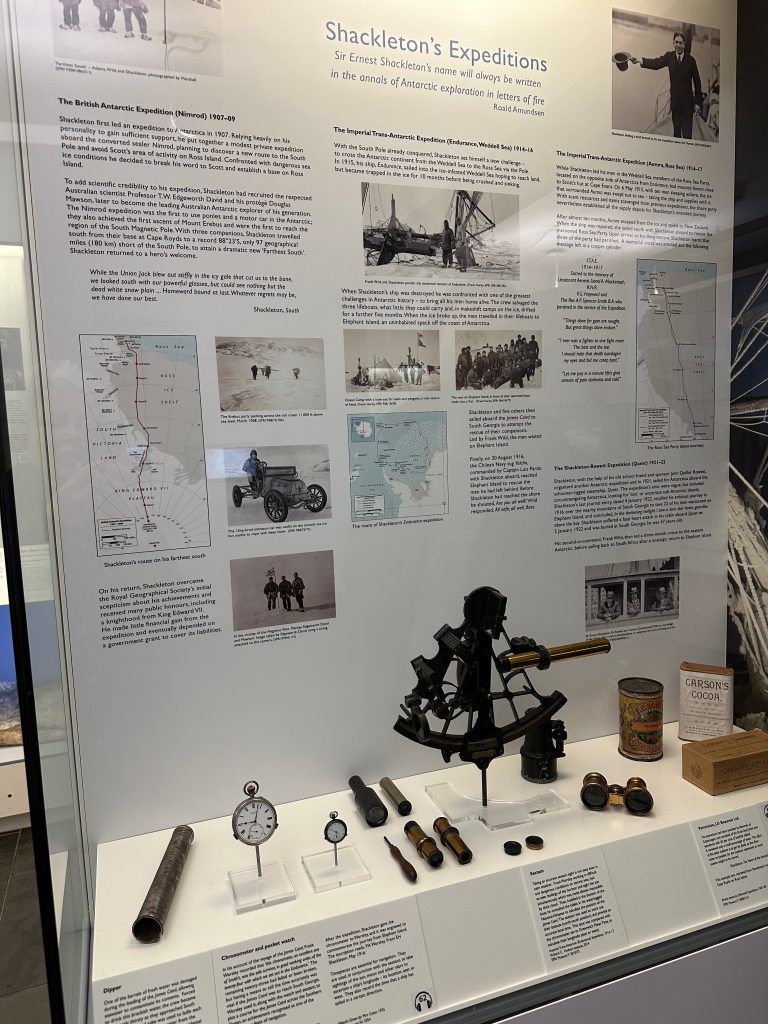
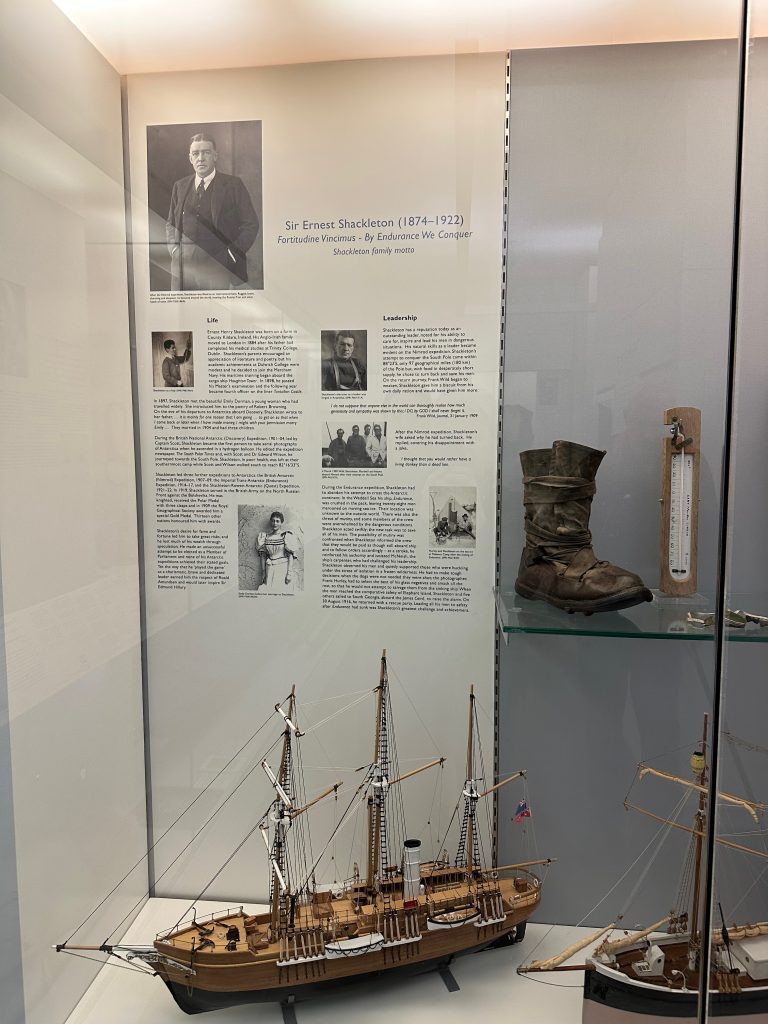
What Did I Find the Most Interesting?
A Chronometer, Pocket Watch and Sextant of the type that Frank Worsley used to try to guide them across the sea from Elephant Island to South Georgia in the James Caird lifeboat. This brought to life for the me the enormity of the challenge he had, as he attempted to take readings of the horizon and sight the sun at the same time, when they were mostly in thick clouds. He then had to consult tables in his Nautical Almanac. He used the Sextant to work out both local time and their latitude position (North to South) then compare the time to the chronometer which was set to Greenwich Meantime to work out the longitude. All whilst being thrown around in a small boat in a storm. Its amazing they landed anywhere!
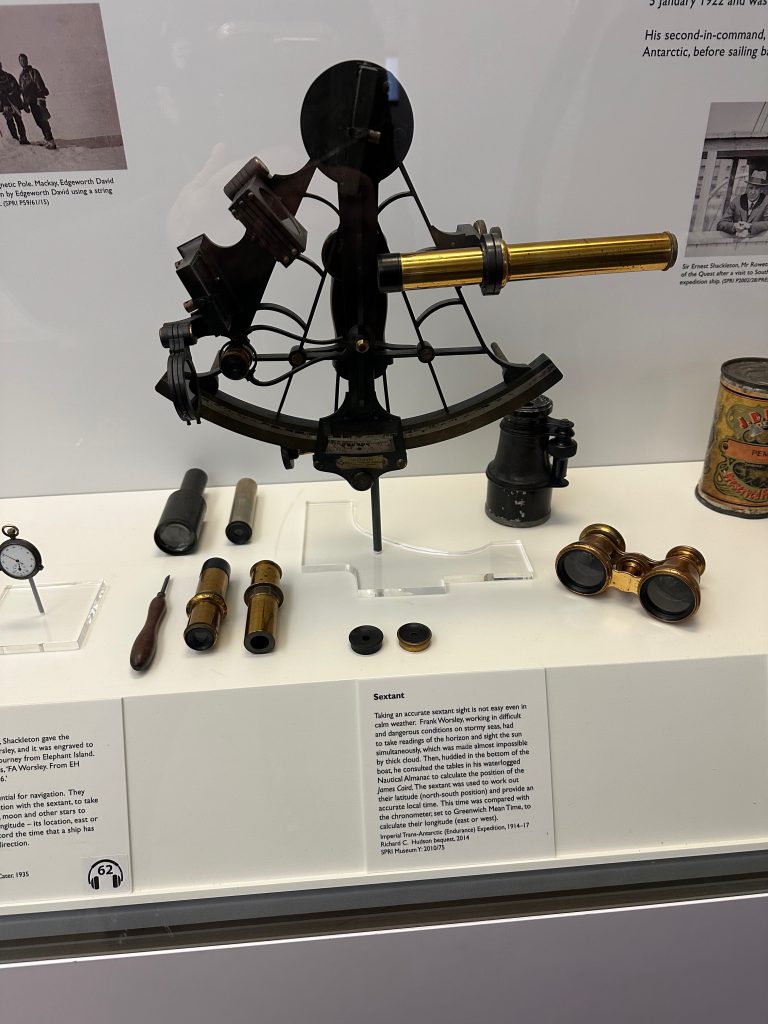
You can support and contribute to the Scott Polar Research Institute by becoming a ‘Friends of’… Here’s a link to the Friends of SPRI facebook group: FOSPRI FaceBook Page and this is the link to join as well as donate/sponsor if you would prefer: Join FOSPI. It’s pretty low cost to become a ‘Friends Of Scott Polar Research Institute’ but brings you together with like minded people – people like me!
What Did I learn about the Arctic?
It’s pleasing to know that there are still many Indigenous people living in the Artic region, even if it’s challenging to retain their cultural identity. Seeing their traditional dress and understanding how colours in that dress indicate the different generations. It would be a tragedy to lose their skills and knowledge. I hope to learn more during our early summer trip there.
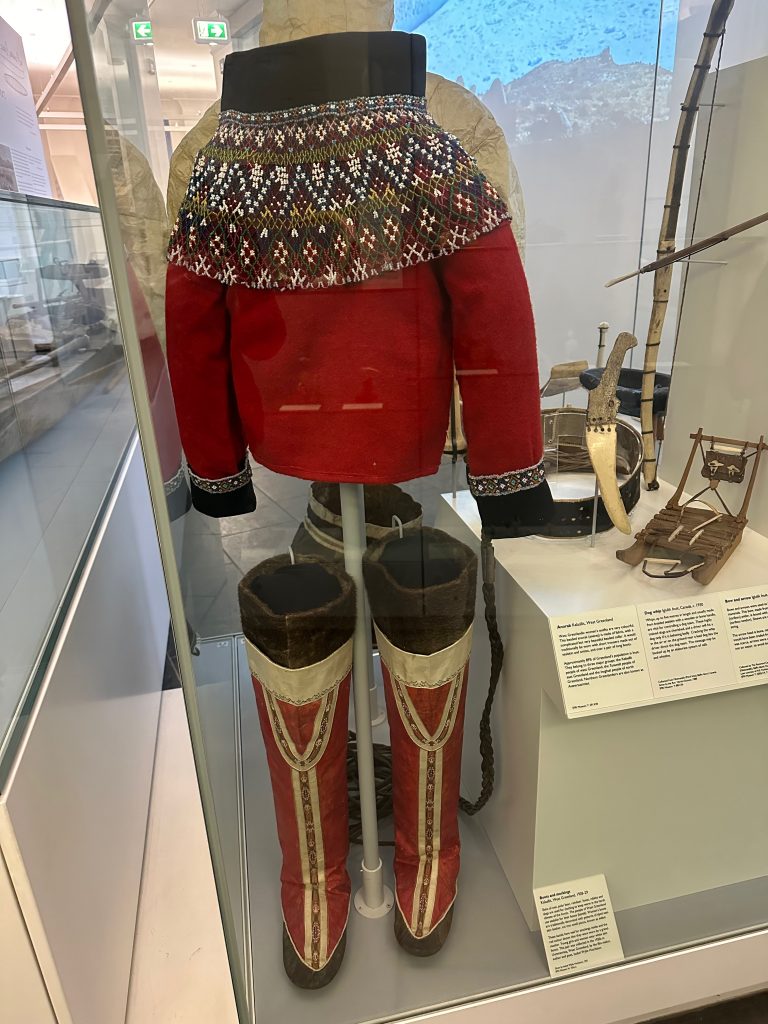
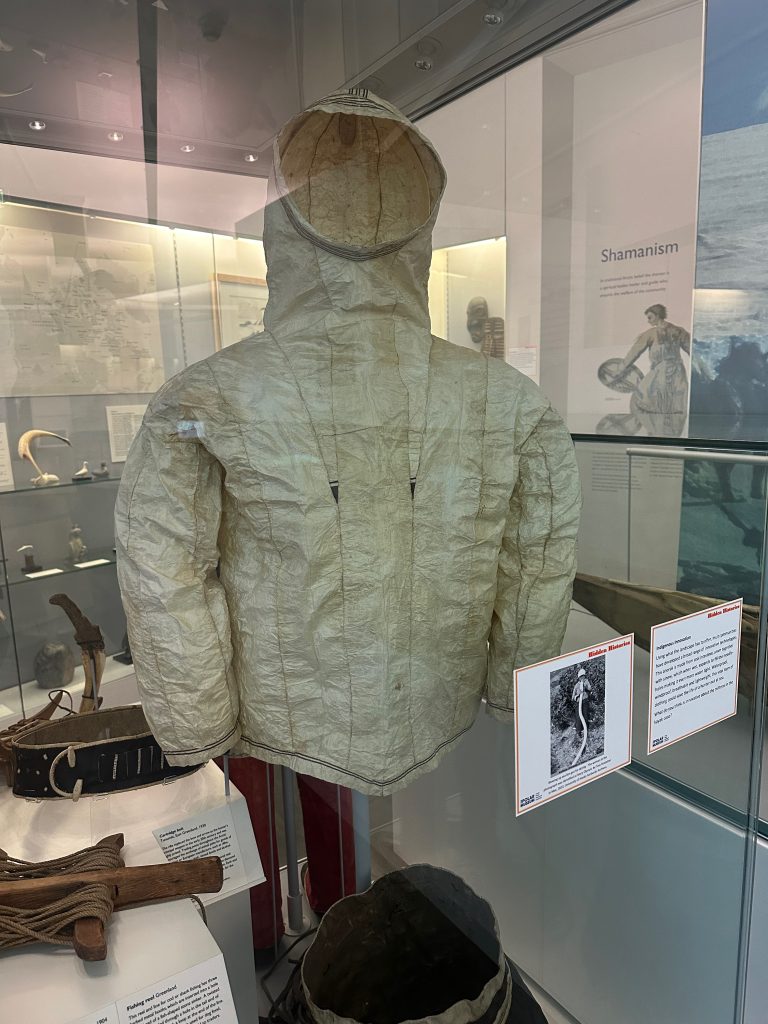
Worth Visiting? Definitely! You should plan to spend at least an hour or so at this small museum and enrich your interest in our polar regions.
